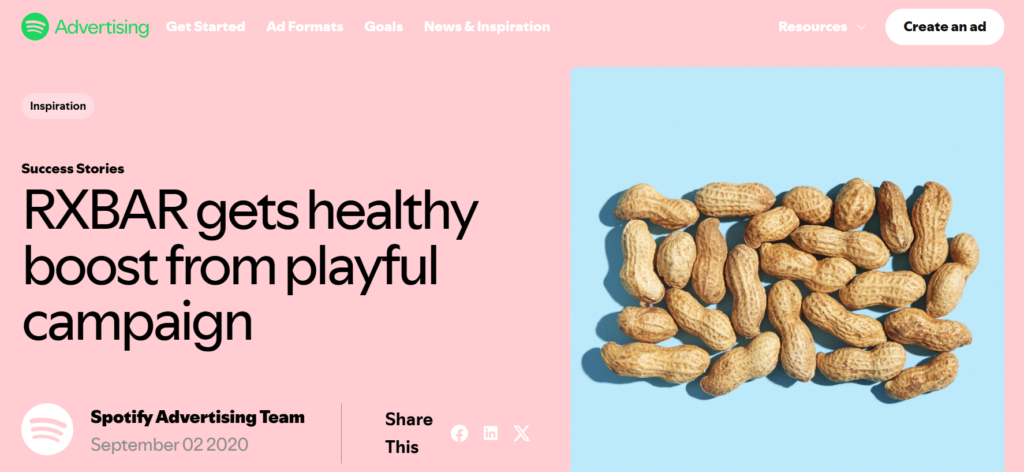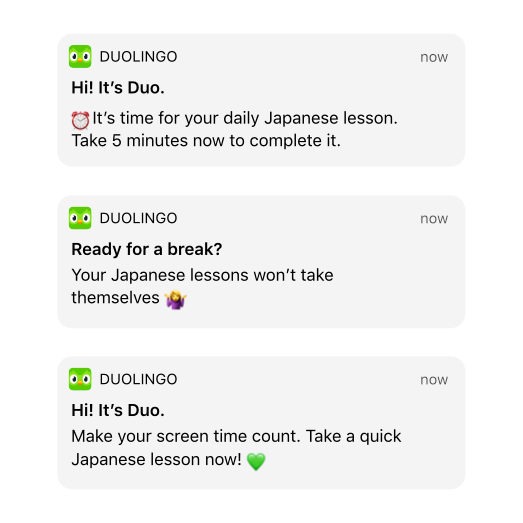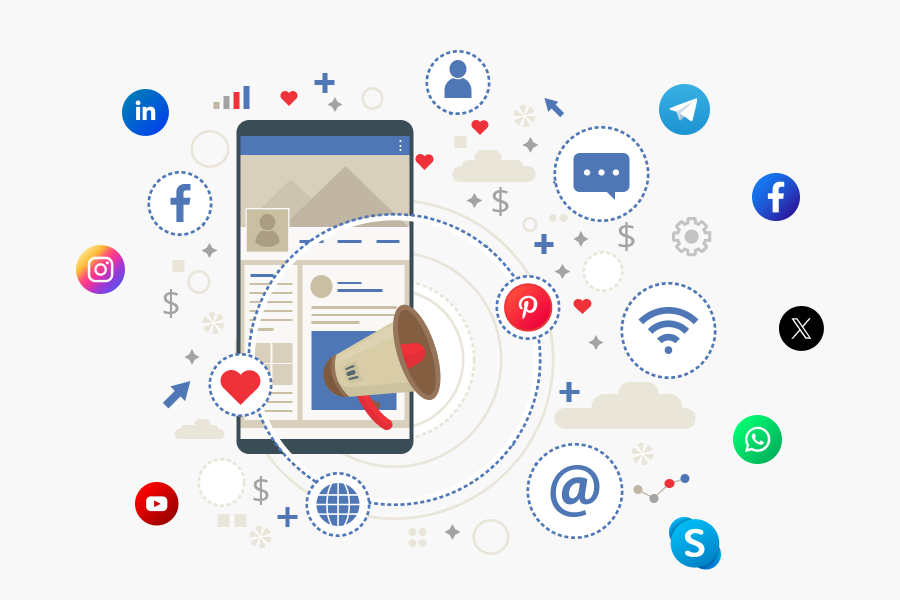Mobile marketing has become a key focus for many businesses today. Why? Because people are spending more time on their phones for online activities. This means that to connect with and convert customers, companies need to put a good chunk of their efforts into mobile marketing strategies.
Let’s look at some numbers to understand how important mobile has become. In late 2023, over half of all website visits – about 58% – came from mobile devices. Even more impressive, 60% of online shopping happened on phones and tablets. Clearly, smartphones are the go-to device for many people browsing and buying online.
As marketers, we need to meet people where they are. And right now, that’s on mobile. To help spark some ideas for your next campaign, let’s take a look at some great examples of mobile marketing. These might give you some fresh inspiration as you plan your upcoming strategies.
What is Mobile Marketing?
Let’s break down mobile marketing in simple terms. It’s all about reaching people through their smartphones and tablets. The goal? To connect with customers in a personal way, giving them useful information at just the right time and place.
Think about it – how often do you use your phone to find a nearby restaurant or check store hours? That’s where mobile marketing comes in handy. It helps businesses reach you when you’re on the move and looking for something specific.
Now, you might be wondering if mobile marketing is really that important. The truth is, it’s not just important – it’s essential. More and more people are glued to their phones these days. If your business isn’t tapping into mobile marketing, you’re missing out on a huge opportunity to connect with potential customers.
What Sets Mobile Marketing Apart from Other Marketing Channels?
Mobile marketing is a unique branch of the marketing tree, with its own set of challenges and opportunities. While it shares some common ground with other marketing strategies, it also has distinct features that set it apart.
At its core, all marketing aims to understand the customer and build trust. Companies need to clearly communicate their offerings, benefits, and data practices. This fundamental principle applies across the board, whether you’re marketing through traditional channels or mobile devices.
However, mobile marketing introduces a new set of variables. Marketers must navigate a complex landscape of regional regulations, diverse device types, evolving cellular networks, and various operating systems. They also need to consider the different layers between the customer and the business, such as app stores and operating system interfaces.
Take SMS marketing, for instance. It’s subject to stricter regulations compared to other mobile channels like in-app messaging or push notifications. Many regions limit SMS use to essential communications like password resets and account updates, rather than promotional content. This means marketers need to be savvy about which mobile channels they use and how they use them.
The global nature of mobile marketing adds another layer of complexity. User behavior and regulations can vary significantly from one country to another. Some nations have embraced mobile internet wholeheartedly, while others still lean heavily on desktop usage. A successful mobile marketing strategy needs to account for these regional differences.
Technical considerations also play a crucial role. Different devices and operating systems require different approaches. For example, push notifications on iOS and Android devices have distinct characteristics and rendering requirements. Marketers need to ensure their apps and mobile sites look and function well across all platforms.
Perhaps the most distinctive aspect of mobile marketing is its emphasis on permissions and trust-building. Mobile users are increasingly cautious about sharing their data. They want to know what information they’re giving up and, more importantly, how it benefits them. Common permission requests include location tracking and push notification privileges. Users are more likely to grant these permissions if they see clear value in doing so. For instance, a music app might successfully request location access by promising to alert users about nearby concerts featuring their favorite artists.
In essence, while mobile marketing shares some DNA with other marketing strategies, it requires a specialized approach. Marketers need to be well-versed in mobile-specific regulations, technical requirements, and user expectations to create effective campaigns in this dynamic space.
The Types Of Mobile Marketing
Top 8 Mobile Marketing Strategies for Modern Businesses are:
SMS Marketing
Short text messages sent directly to subscribed customers form the backbone of SMS marketing. This method offers a direct line to your audience, allowing for personalized promotions and timely information delivery. With real-time engagement capabilities and easy-to-click links, SMS marketing proves cost-effective while providing robust performance tracking. It’s ideal for promotions, appointment reminders, and surveys. Remember to adhere to legal regulations, obtain user consent, and provide clear opt-out options.
MMS Marketing
Taking text messaging a step further, MMS marketing incorporates multimedia elements like images, videos, and audio. This approach allows businesses to convey information more visually and engagingly than traditional SMS. It’s particularly effective for content that benefits from visual presentation. However, when using MMS, consider potential data costs for recipients and optimize your messages for a seamless user experience.
Location-Based Marketing
This strategy capitalizes on users’ real-time geographic locations to deliver targeted, relevant content. It’s especially useful for promoting local businesses, events, or attractions. By providing timely information based on a user’s current location, businesses can create highly personalized and impactful marketing campaigns.
Mobile Search Ads
Designed specifically for mobile devices, these ads appear in search engine results. They target users actively searching for specific products, services, or information on their phones. This strategy effectively increases visibility and drives traffic to websites or apps, strengthening online presence and attracting potential customers at the moment of interest.
App-Based Marketing
This approach involves promoting products or services within mobile apps. It allows businesses to connect with a targeted, engaged audience that has already downloaded their app. Incorporating ads, sponsored content, and cross-promotions can significantly boost user engagement and conversions. The key advantage lies in delivering customized, relevant information directly to app users, enhancing their experience.
In-Game Mobile Marketing
Tapping into the vast mobile gaming market, this strategy involves placing ads within mobile games. These can be banner ads, video ads, or interactive elements seamlessly integrated into the gaming experience. It’s an effective way to reach a diverse and engaged audience without disrupting gameplay.
QR Codes
Access to websites, apps, or specific content. QR codes offer a convenient, contactless way to connect physical and digital environments. They’re widely used in retail, restaurants, and marketing campaigns to provide instant information or promotional content to users.
Push Notifications
These brief messages sent directly through mobile apps offer immediate interaction with users. They’re excellent for announcements, reminders, or updates that promote app usage. Push notifications can create personalized experiences and engage users with relevant content instantly. However, it’s crucial to use them judiciously to avoid overwhelming or frustrating users.
How Does Mobile Marketing Work?
Mobile marketing is a powerful tool that businesses can use to reach and engage with their target audience. It involves using mobile devices, such as sma=]rtphones and tablets, to promote products and services. Mobile marketing has several key advantages over traditional marketing methods, including:
- High reach: Mobile devices are ubiquitous, and almost everyone has one within reach. This means that mobile marketing can reach a large and diverse audience.
- High engagement: People spend a lot of time on their mobile devices, and they are more likely to engage with marketing messages that are delivered to them in this way.
- High conversion rates: Mobile marketing can lead to high conversion rates, as people are more likely to take action on a marketing message when they are already on their mobile device.
- High ROI: Mobile marketing can be very cost-effective, and it can generate a high return on investment.
Mobile marketing is a complex and ever-evolving field. However, by understanding the basics of how it works, businesses can create effective mobile marketing campaigns that can help them reach their target audience and achieve their marketing goals.
Here are some additional tips for effective mobile marketing:
- Keep your messages short and sweet. People are more likely to read and respond to short, concise messages.
- Use a strong call to action. Tell your customers what you want them to do, such as visit your website, download your app, or make a purchase.
- Personalize your messages. Use data to personalize your messages to each individual customer. This will help to increase engagement and conversion rates.
- Test and track your campaigns. Track the performance of your mobile marketing campaigns so that you can see what is working and what is not. This will help you to optimize your campaigns for better results.
How Do You Start implementing a Mobile Marketing Strategy?
To start implementing a mobile marketing strategy, companies should first consider their specific goals and target audience. Common approaches include creating mobile-friendly emails and using location-based tactics. More advanced strategies might involve developing a custom mobile app that integrates with other marketing tools.
When choosing a mobile marketing approach, it’s important to focus on solving customer problems. After setting clear objectives, companies need to identify the right technology to support their strategy.
For mobile marketing, various technologies may be necessary. Text message campaigns require an SMS aggregator. Building a mobile app calls for either in-house developers or partnering with an external agency. If the app needs to work with other marketing systems, data integration is crucial. Email marketers should use rendering and proofing tools to ensure their messages display correctly across different devices and email clients.
Companies often have different goals for mobile marketing. For some, like social media platforms or mobile game developers, the app itself is the product. These businesses typically aim to increase in-app purchases or user engagement.
Other companies use mobile apps to support their main products or services. In these cases, goals might include improving customer service, boosting online sales, or providing easy access to account information. Some businesses focus on reaching customers at the right time and place to encourage specific actions.
Overall, mobile marketing strategies should align with the company’s broader business objectives and cater to their customers needs and preferences.
What are the Mobile Marketing Best Practices?
Mobile marketing is now a key part of digital marketing. To make it work well, you need to know your audience. This means learning about their age, gender, where they live, and how much money they make. It’s also good to know what they like, their hobbies, and how they live. Find out if they use iPhones or Android phones, what apps they use, and how long they spend on their phones.
Your content should work well on phones. Make sure your website and emails look good on small screens. They should load quickly and be easy to use. Put clear buttons that tell people what to do next.
Use different ways to reach people on their phones. You can send text messages with special offers. Emails should be short and easy to read on phones. Push notifications can send quick updates. Apps can keep people interested in your brand. Social media, especially Instagram, TikTok, and Snapchat, is great for younger people. You can also show ads on phones to reach the right people.
Make your messages personal. This makes people more interested. You can use where people are to send them offers nearby. Time-limited offers can make people act fast.
Keep track of how well your mobile marketing is doing. Look at how many people click on your links or use your app. Try different things to see what works best. Learn how people use your app or website to make it better.
Stay up to date with new mobile trends. Learn about new tech like 5G, augmented reality, and virtual reality. Know what people like and what works well in mobile marketing.
If you follow these tips, you can reach more people on their phones, get them to buy things, and meet your goals. Remember, mobile marketing is always changing, so keep learning and improving what you do.
Examples of Mobile Marketing Campaigns
Mobile marketing is no longer just an option—it’s become an essential part of how businesses connect with people in today’s world. Think about it: how often do you reach for your phone throughout the day? Whether it’s checking messages, scrolling through apps, or browsing online, your smartphone is always within reach. And businesses know this. They’re using everything from engaging app campaigns to personal SMS messages to not only get your attention but to create meaningful interactions.
RXBAR and Spotify: A Strategic Partnership

The partnership between RXBAR and Spotify was a masterclass in leveraging mobile marketing to reach a target audience effectively. Here are some of the key mobile marketing strategies they employed:
1. Targeted Mobile Advertising:
- Spotify Ad Platform: RXBAR utilized Spotify’s ad platform to target specific demographics, such as fitness enthusiasts and health-conscious individuals.
- Audio Ads: They incorporated audio ads into Spotify’s playlists, seamlessly integrating their message into the user’s listening experience.
- Video Ads: Short, engaging video ads were displayed on mobile devices, capturing attention and driving brand recall.
2. Social Media Integration:
- Influencer Partnerships: RXBAR collaborated with fitness influencers on social media platforms like Instagram and TikTok to create sponsored content. These influencers often shared their workout routines and healthy snack choices, featuring RXBAR prominently.
- User-Generated Content: The brand encouraged users to share their RXBAR experiences on social media, using specific hashtags.
- Social Media Contests: By running contests and giveaways on platforms like Instagram and Twitter, RXBAR generated buzz and increased brand engagement.
3. Mobile App Integration:
- Spotify’s Mobile App: RXBAR could have integrated its products into Spotify’s mobile app, for example, by offering exclusive discounts or limited-edition products to premium subscribers.
- Fitness App Partnerships: Collaborating with fitness apps could have allowed RXBAR to target users based on their workout routines and nutritional needs.
4. SMS Marketing:
- Personalized Text Messages: RXBAR could have sent personalized text messages to customers, offering exclusive deals, product recommendations, or reminders to try new flavors.
- SMS Surveys: Conducting brief SMS surveys to gather feedback on product preferences and customer satisfaction.
5. Mobile Website Optimization:
- Responsive Design: Ensuring that the RXBAR website is optimized for mobile devices, providing a seamless user experience.
- Fast Loading Times: Prioritizing fast loading speeds to prevent users from abandoning the site.
- Easy Navigation: A simple and intuitive mobile website design.
By combining these mobile marketing strategies, RXBAR and Spotify were able to effectively reach their target audience, drive brand awareness, and ultimately boost sales.
Push Notifications: Duolingo’s Creative Approach

Duolingo understands that generic push notifications can quickly become annoying. Instead, they prioritize personalized notifications that are relevant to each user’s specific needs and goals. This personalized approach significantly improves user engagement and retention.
Here’s how Duolingo leverages personalization:
- Language-Specific Notifications: Users receive notifications tailored to the languages they are learning.
- Skill-Based Notifications: Notifications are sent based on the user’s current skill level and progress.
- Timely Reminders: Duolingo uses data on user behavior to send timely reminders, such as notifications to complete a daily lesson or practice a specific skill.
Gamification Through Notifications
Duolingo’s gamification strategy is a key driver of user engagement. They use push notifications to reinforce the game-like elements of the app, motivating users to continue learning.
Gamification techniques used in Duolingo’s notifications:
- Streak Rewards: Users are rewarded for consecutive days of practice, and notifications are sent to encourage them to maintain their streak.
- Level Up Notifications: When a user reaches a new level, they receive a congratulatory notification, further motivating them to continue learning.
- Limited-Time Challenges: Duolingo often introduces time-limited challenges, and notifications are sent to remind users to participate and earn rewards.
The Art of the April Fool’s Prank
In 2019, Duolingo launched a viral April Fool’s Day campaign, where they claimed that their mascot, Duo the Owl, would personally notify users to practice their language lessons. The humorous video featuring Duo interrupting people’s daily lives went viral, generating significant buzz and attracting new users.
This campaign highlighted the power of humor and creativity in mobile marketing. By making users laugh and engaging with them on an emotional level, Duolingo was able to increase brand awareness and drive app downloads.
Netflix’s App Push Notifications

Netflix takes a thoughtful, personal approach to its push notifications. Instead of generic alerts, they send you reminders that feel like they’ve been crafted just for you—whether it’s a heads-up about the release date of a series you’ve been eagerly waiting for, a suggestion to pick up where you left off, or a recommendation for a movie that perfectly aligns with your tastes.
Netflix taps into your unique viewing habits and interests, sending these notifications at times you’re most likely to unwind and enjoy some downtime, making sure it feels like a gentle nudge from a friend who knows your preferences.
Why it worked:
The success lies in Netflix’s ability to make these notifications feel personal. It’s not just an alert—it’s a curated experience that reminds you why you love Netflix in the first place. By staying in tune with your watching patterns and preferences, Netflix makes each recommendation feel relevant and timely, increasing the chances you’ll click and watch.
It’s like Netflix is helping you discover that next hidden gem or reminding you to dive back into a series you’ve been meaning to finish. This approach keeps you engaged, and the sense of being personally catered to deepens your connection with the platform, reducing the likelihood that you’ll drift away.
If you’re interested in reading more blogs on topics like mobile marketing or other marketing strategies, be sure to follow our blog! Stay in the loop by following us on social media, X, Facebook, and LinkedIn, for the latest updates.
